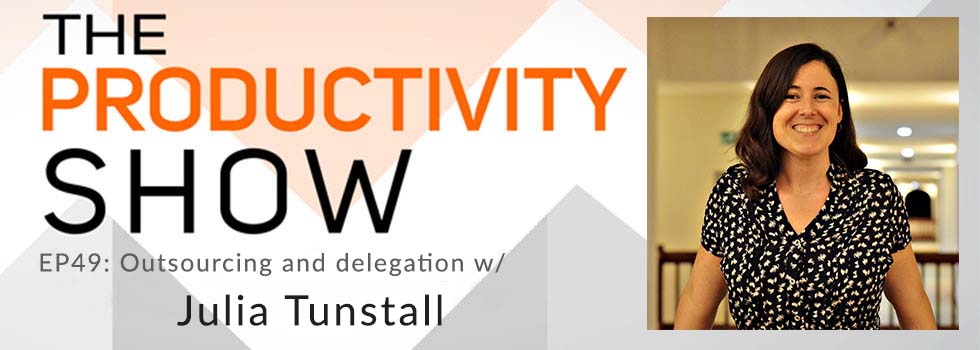Julia Tunstall is a delegation specialist and automation nerd. She works with solo business owners to help them streamline their business and find opportunities to delegate and automate their busywork so they can spend their time doing the work they care about.

Cheat Sheet
- What mistakes to avoid when hiring virtual help (a.k.a. lessons learned from failed outsourcing).
- What Julia did to take a 100 workweek to an 8 hour workweek.
- What you need to make your outsourcing investment give you huge returns in time, energy and dollars.
- Best one-off tasks for your virtual assistants (VAs for short).
- How to have the team vs. expense mindset with your staff.
- When to hire and why hiring is actually the 4th step to outsourcing.
- Where to find qualified, affordable VAs online.
- How to grow your VA’s skills and increase retention rates at the same time.
Links
- TPS28 w/ Sam Carpenter
- Four Hour Work Week by Tim Ferriss
- Article: How Elance-Odesk turns to Upwork
- Upwork
- HipChat
- Slack
- Virtual Freedom by Chis Ducker
- Virtual Staff Finder
- OnlineJobs.ph
- Leave us a message!
- Free Productivity Workshop
Book, tool, frog
Book: The E-Myth Revisited by Michael Gerber
Tool:
Frog: An Asana program to help bloggers.
Connect with Julia
If you enjoyed this episode, subscribe to the podcast on iTunes, Stitcher, Overcast, PocketCast or your favorite podcast player. It’s easy, you’ll get new episodes automatically, and it also helps the show gain exposure. You can also leave a review! Here’s how.
If you enjoyed this episode, follow the podcast on Apple Podcasts, Spotify, Stitcher, Overcast, Pocket Casts or your favorite podcast player. It’s easy, you’ll get new episodes automatically, and it also helps the show. You can also leave a review!
